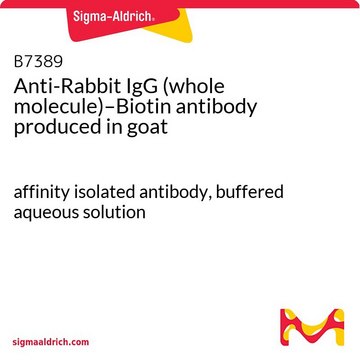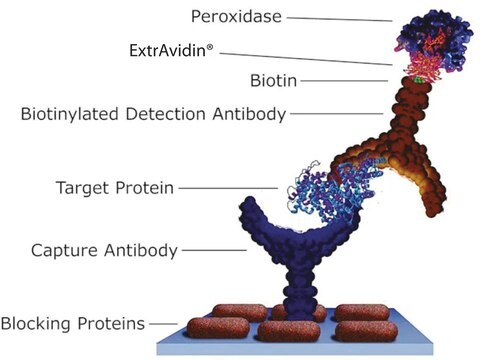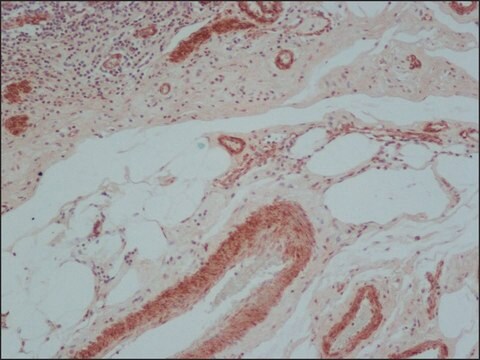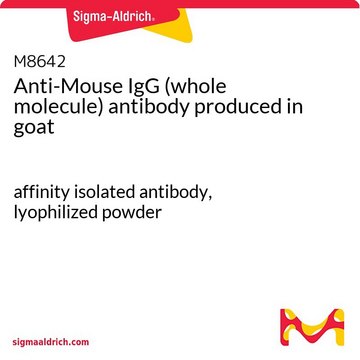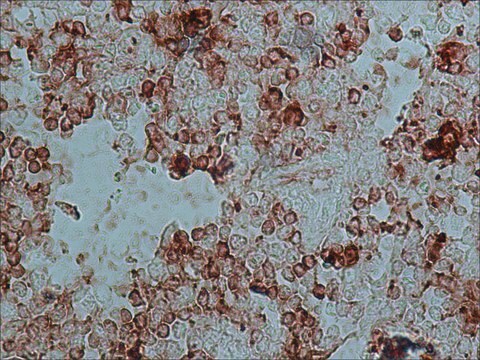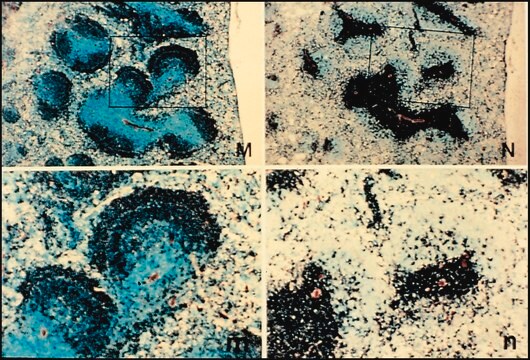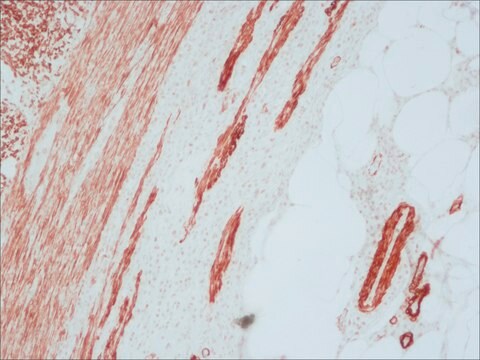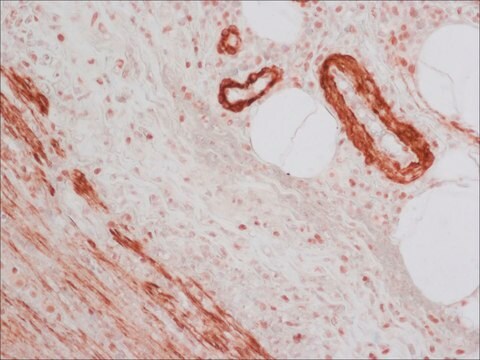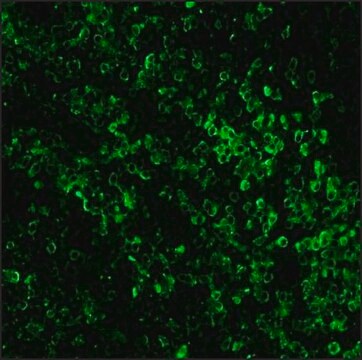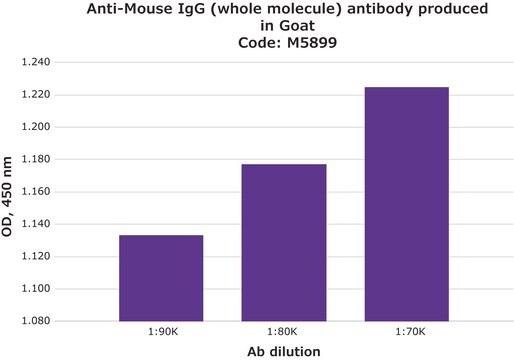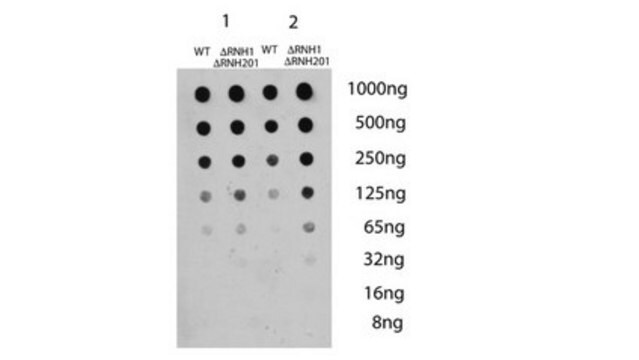B7264
Anti-Mouse IgG (whole molecule)−Biotin antibody produced in goat
affinity isolated antibody, buffered aqueous solution
Synonym(s):
Biotinylated anti-Mouse IgG, Goat anti-Mouse IgG
Sign Into View Organizational & Contract Pricing
All Photos(1)
About This Item
Recommended Products
biological source
goat
Quality Level
conjugate
biotin conjugate
antibody form
affinity isolated antibody
antibody product type
secondary antibodies
clone
polyclonal
form
buffered aqueous solution
technique(s)
direct ELISA: 1:20,000
storage temp.
2-8°C
target post-translational modification
unmodified
Looking for similar products? Visit Product Comparison Guide
General description
Immunoglobulin G (IgG) is a glycoprotein antibody that regulates immune responses such as phagocytosis and is also involved in the development of autoimmune diseases . Mouse IgGs have four distinct isotypes, namely, IgG1, IgG2a, IgG2b, and IgG3. IgG1 regulates complement fixation in mice . Anti-Mouse IgG (whole molecule)-Biotin antibody binds all mouse immunoglobulins.
Immunogen
Purified mouse IgG
Application
Anti-Mouse IgG (whole molecule)-Biotin antibody is suitable for use in ELISA (1:5000) and immunocytochemistry (1:50).
Physical form
Solution in 0.01 M phosphate buffered saline pH 7.4, containing 1% bovine serum albumin and 15 mM sodium azide.
Disclaimer
Unless otherwise stated in our catalog or other company documentation accompanying the product(s), our products are intended for research use only and are not to be used for any other purpose, which includes but is not limited to, unauthorized commercial uses, in vitro diagnostic uses, ex vivo or in vivo therapeutic uses or any type of consumption or application to humans or animals.
Not finding the right product?
Try our Product Selector Tool.
Storage Class Code
10 - Combustible liquids
WGK
nwg
Flash Point(F)
Not applicable
Flash Point(C)
Not applicable
Choose from one of the most recent versions:
Already Own This Product?
Find documentation for the products that you have recently purchased in the Document Library.
Customers Also Viewed
Rebecca L Cramp et al.
The Journal of experimental biology, 213(Pt 8), 1301-1308 (2010-03-30)
Saltwater crocodiles, Crocodylus porosus, possess lingual salt glands which function to remove excess Na(+) and Cl(-) accumulated as a consequence of living in salt water. Little is known about the nature of ion transport systems in C. porosus salt glands
Chantal Keijzer et al.
PloS one, 6(11), e26684-e26684 (2011-11-11)
Development of vaccines in autoimmune diseases has received wide attention over the last decade. However, many vaccines showed limited clinical efficacy. To enhance vaccine efficacy in infectious diseases, biocompatible and biodegradable polymeric nanoparticles have gained interest as antigen delivery systems.
T Luther et al.
The American journal of pathology, 150(4), 1231-1244 (1997-04-01)
uPAR (CD87), the receptor for the urokinase-type plasminogen activator (uPA) facilitates tumor cell invasion and metastasis by focusing uPA proteolytic activity to the cell surface. As uPAR exists in various molecular forms, it is desirable to use well defined antibodies
Rebekah L Bower et al.
American journal of physiology. Regulatory, integrative and comparative physiology, 310(9), R788-R793 (2016-02-26)
The calcitonin receptor (CTR) is relevant to three hormonal systems: amylin, calcitonin, and calcitonin gene-related peptide (CGRP). Receptors for amylin and calcitonin are targets for treating obesity, diabetes, and bone disorders. CGRP receptors represent a target for pain and migraine.
U Greferath et al.
The Journal of comparative neurology, 301(3), 433-442 (1990-11-15)
An antibody directed against protein kinase C (PKC) was applied to various mammalian retinae. In the cat, rat, rabbit, and macaque monkey we found PKC-like immunoreactivity in bipolar cells which had the morphology of rod bipolar cells; in the rat
Our team of scientists has experience in all areas of research including Life Science, Material Science, Chemical Synthesis, Chromatography, Analytical and many others.
Contact Technical Service

